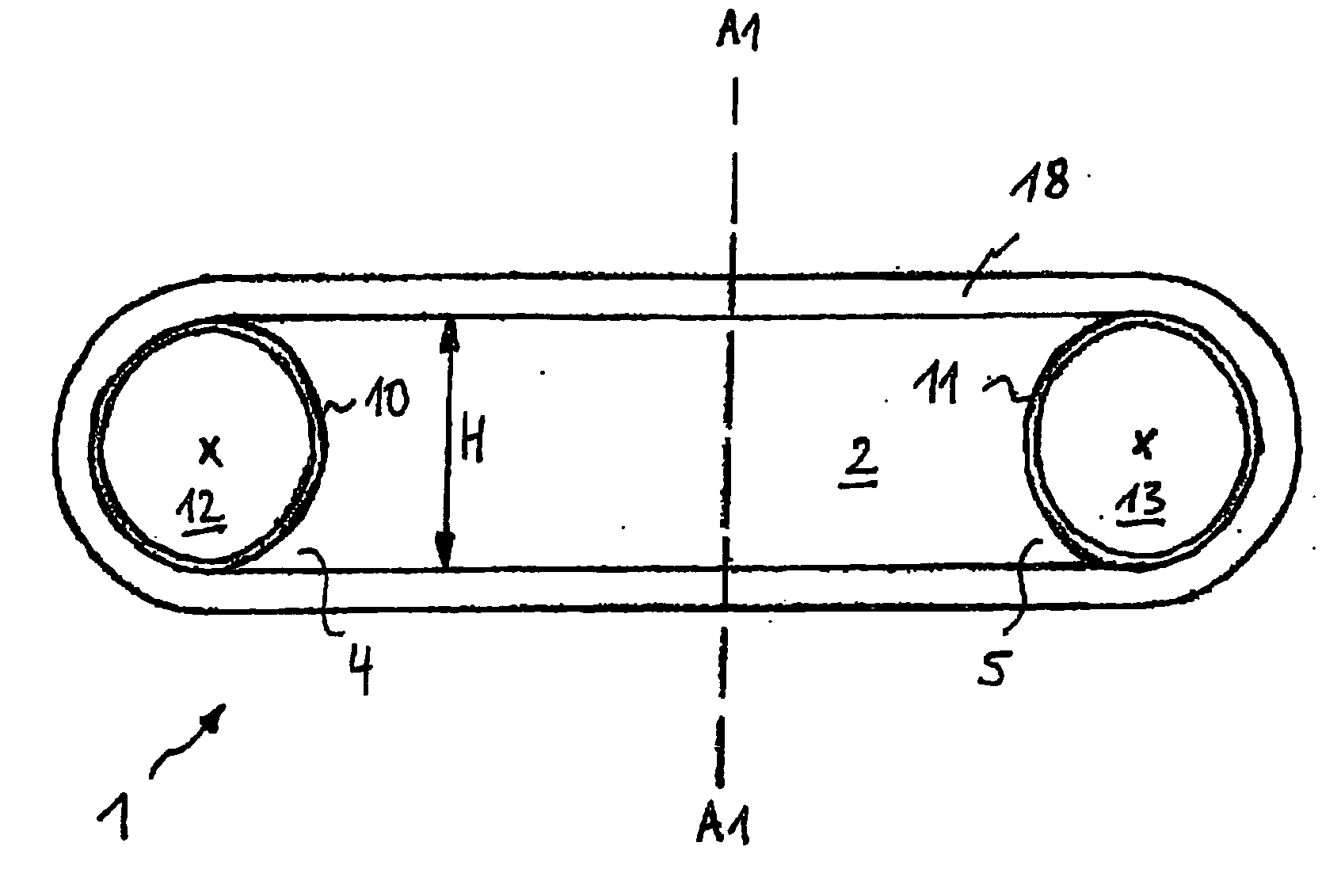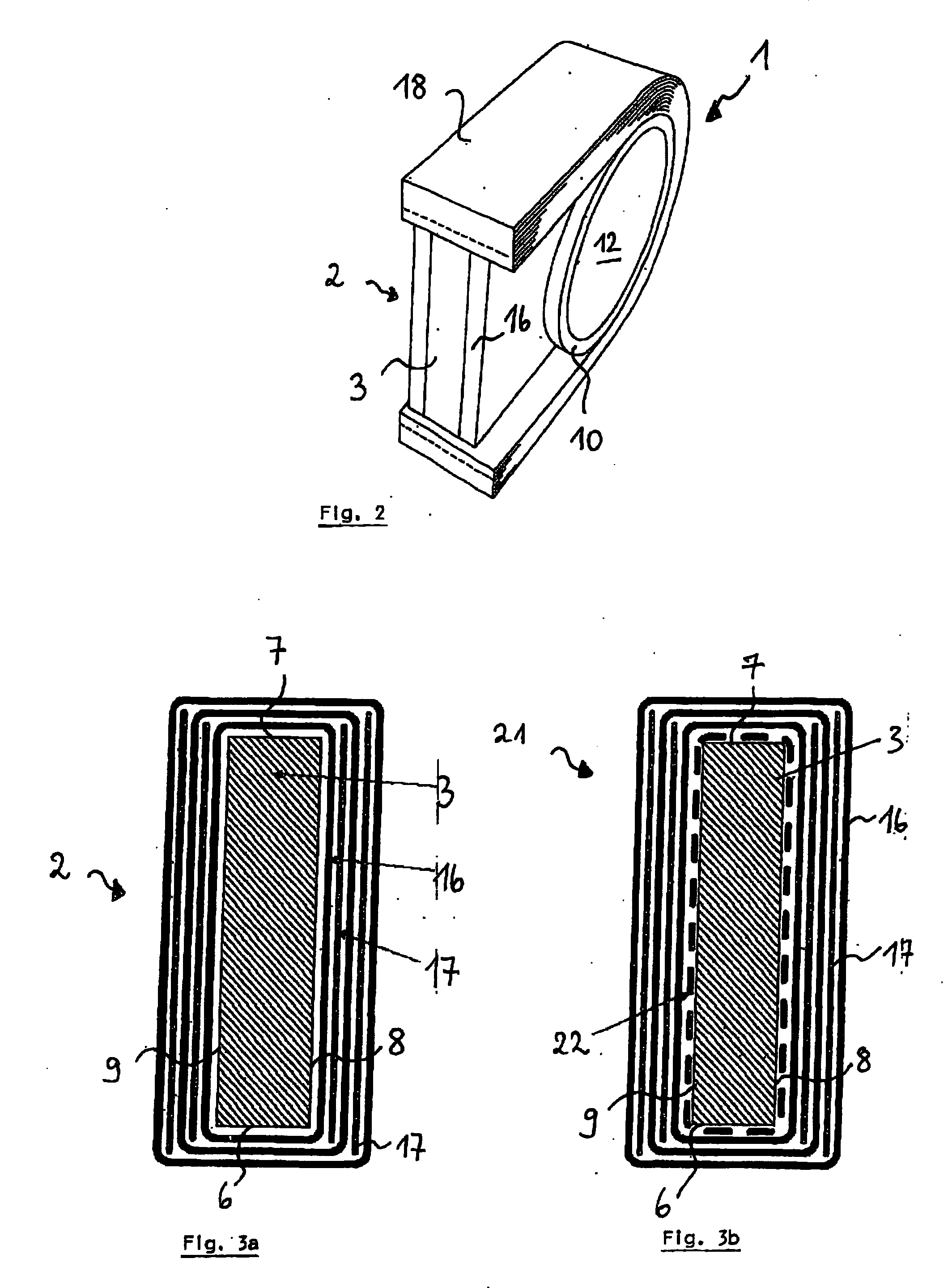Composite fiber component produced by braiding
- Summary
- Abstract
- Description
- Claims
- Application Information
AI Technical Summary
Benefits of technology
Problems solved by technology
Method used
Image
Examples
Example
DETAILED DESCRIPTION OF THE DRAWINGS
[0048] In the figures, identical or similar components have identical reference numbers. The representations in the figures explain the fiber composite component purely schematically and may partly not be true to scale.
[0049]FIG. 1a illustrates a preferred embodiment of the fiber composite component 1 according to the invention, which comprises a core element 2 whose faces 4, 5 are concavely constructed with a defined radius of curvature. This is also illustrated in FIG. 1c, which is a schematic three-dimensional representation of a rectangular parallelepiped shaped core element 2 with corresponding transverse sides 6, 7 and longitudinal sides 8, 9. The axis of curvature of the concavity Ak extends perpendicular to the longitudinal sides 8, 9 and is illustrated in FIG. 1c by a dash-dotted line. Correspondingly, the axis of curvature of the concavity Ak is perpendicular to the plane of the drawing of FIG. 1a, and is indicated by an “x”.
[0050] As...
PUM
| Property | Measurement | Unit |
|---|---|---|
| Angle | aaaaa | aaaaa |
| Angle | aaaaa | aaaaa |
| Radius | aaaaa | aaaaa |
Abstract
Description
Claims
Application Information
 Login to View More
Login to View More - R&D
- Intellectual Property
- Life Sciences
- Materials
- Tech Scout
- Unparalleled Data Quality
- Higher Quality Content
- 60% Fewer Hallucinations
Browse by: Latest US Patents, China's latest patents, Technical Efficacy Thesaurus, Application Domain, Technology Topic, Popular Technical Reports.
© 2025 PatSnap. All rights reserved.Legal|Privacy policy|Modern Slavery Act Transparency Statement|Sitemap|About US| Contact US: help@patsnap.com



